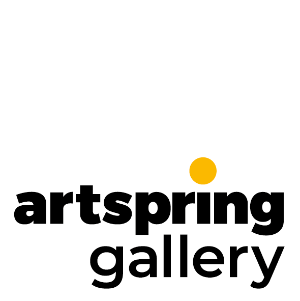By Caroline Fraser
One of the things that I enjoy most when visiting exhibitions is the opportunity to see the notebooks and sketchbooks of the artist in question.
Sketchbooks and diaries offer a inique insight into the artist's ways of working and thinking. Reading the notebooks is bit like reading the mind of the artist during the act of creating a new work or series of works.
What were they thinking? Where did they get their ideas from? What fuels their creative energies?
Many of us take a diary or sketchbook away on holiday, and make notes or little sketches of places that we hope to remember. The artist sketchbook takes this process a stage further, with thoughts and plans for future drawings or paintings, notes about colour or mood, thoughts and feelings about a place or event, and more.
Why use a sketchbook?
Artists have used sketchbooks for hundreds of years. Leonardo da Vinci made copious notes and drawings on proportion, geometry and ideas such as perpetual motion, as well as sketches on human and animal anatomy. Leonardo's notebooks can be viewed online at the V&A museum. Strangely, he chose to keep notes in mirror writing, starting at the end of a book and writing from right to left.
So why use a sketchbook?
Art galleries and public places are not keen on individuals setting up an easel to make a study of a famous painting. Many artists learn about technique and colour by copying the famous masters in order to understand their methods.
Taking a sketchbook into a gallery or public space is acceptable, and discreet.

Girl sketching at the Tate Modern gallery © Caroline Fraser
Recording a scene
Painting and drawing in nature ( en plein air) is not always feasible. Limits on time, weather and wind constraints all make completing a work outdoors challenging at times. Carrying a notebook and some drawing tools is preferable to lugging an easel up a mountain!
Sketchbooks allows the artist to make a visual record to take back to the studio for working on later.

Land into coast | sketchbook | Ruth McDonald

Thoughts on a journey | notebook | Caroline Fraser
Seeing Anthony Gormleys notebooks at the Royal Academy last year was a vaulable addition to a remakable exhibition. Small drawings in tiny notebooks were eventually realised into large three dimensional sculptures that filled entire rooms. To have vision and dreams is everything....

Anthony Gormley sketchbook at the Royal Academy

Anthony Gormley sketchbook at the Royal Academy

Anthony Gormley sketchbook at the Royal Academy

Anthony Gormley sculpture at the Royal Academy, London.
Picasso was another artist known for extensive sketches prior to making large paintings. Between 1894 and 1967 he filled one hundred and sixty seven sketchbooks. His sketchbooks were so important to his creative process that in 1907 he wrote on the pages of one of them 'je suis le cahier' (I am the sketchbook).

Je suis le cahier | a book exploring Picasso's notebooks

One of Picasso's sketchbooks © Caroline Fraser
Colour and mark making
As well as recording places and landscapes visited many artists use sketchbooks for exploring different ways of working. Mark making and experiments with colour mixing of paints and other media are recorded for use in later projects.

A page from Paul Klee's notebooks with notes on colour.
Artspring artist Sarah de Mattos has made notes about the colours of her different water soluble crayons., which will help her select her tools for new works.

Colour notes | Sarah de Mattos
Colour notes from travels to Cuba can be seen in the journal below by East Sussex artist Jean Davey Winter. Like many artists, Jean uses collage in her sketchbooks.

Sketchbook notes from Cuba | Jean Davey Winter
Steal like an artist
Artists take ideas from all moments of life.
Conversations overheard, sound, smell, touch and feel of places and spaces. The work of other artists has a subtle influence too.
Making a record of those events that spark the imagination is vital to productivity. Something as simple as a walk down the road can be the start of a new creation.

Walks from home | Ruth McDonald
In making this post I have talked to other artists about their ways of using sketchbooks. There are as many answers as there are artists; from those who carry a small A6 notebook wherever they go in their back pocket, to those who use loose sheets of paper lovingly curated into box files with Dymo labels.
A picture says a thousand words.....
Hero image at top of article: Front cover 1942-3 Graham Sutherland OM 1903-1980 Presented by Mrs Kathleen Sutherland, the artist's widow, in 1981. http://www.tate.org.uk/art/archive/TGA-812-5-1

